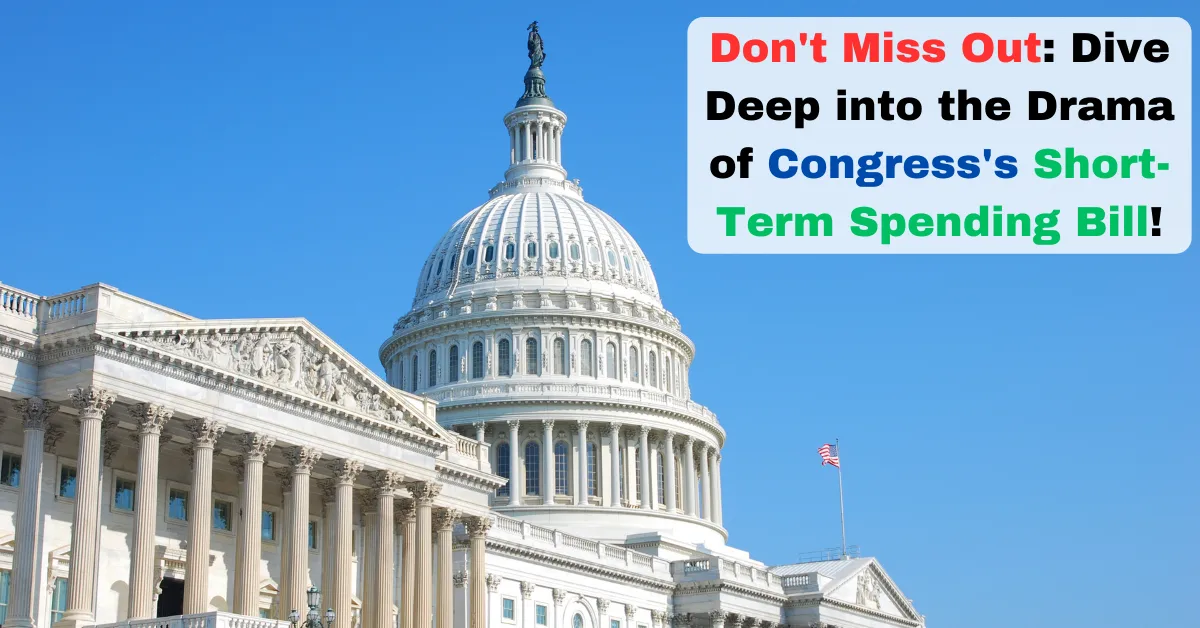
Congress in Crisis: The Hidden Agendas Behind the Short-Term Spending Bill Unveiled
In the heart of Washington’s political theater, the recent approval of a short-term spending bill by the Senate marks a pivotal moment in the ongoing saga of government funding and policy debates. As lawmakers opted for a pragmatic approach to extend the status quo until early next year, we delve into the intricacies of this decision and its potential implications for the political landscape.
The Bipartisan Accord
Amidst the looming government-funding deadline, House lawmakers from both sides of the aisle demonstrated a rare moment of unity, rallying behind a short-term Republican plan. The Senate, echoing this spirit of cooperation, solidified the decision with an 87 to 11 approval vote, steering away from the brink of a government shutdown. This bipartisan accord, though a temporary reprieve, reflects a strategic move to avoid immediate conflict over spending and policy priorities.
Key Players and Perspectives
House Republicans’ Calculated Move
House Republicans, cognizant of potential electoral repercussions, strategically embraced the short-term solution. The fear of being held responsible for a government shutdown spurred a majority to rally behind the stopgap spending plan, demonstrating a pragmatic approach that transcended party lines.
Democrats’ Strategic Alliance
In a surprising turn, Democrats chose collaboration over confrontation, aligning with GOP colleagues to postpone a significant budget battle. Senate Majority Leader Chuck Schumer emphasized the significance of this decision, highlighting the absence of government shutdown threats, cuts to essential programs, or contentious policy insertions.
Looking Ahead: Potential Pitfalls and Future Showdowns
The Specter of Future Disagreements
While the current bipartisan truce averts an immediate crisis, the question lingers: can this fragile peace endure? The looming specter of disagreements on hot-button issues like abortion and immigration casts a shadow on the horizon. The upcoming negotiations over full-year funding will put Republicans to the test, determining if they can stand firm on their policy demands.
Leadership Challenges for Speaker Johnson
House Speaker Mike Johnson, having navigated the delicate terrain of a slim majority, faces an uphill battle in satisfying the diverse demands within his party. The potential discontent among conservatives, evident in their reluctance towards the short-term measure, raises questions about Johnson’s ability to deliver on key party objectives.
Lessons from Recent History
Turmoil Among House Republicans
The backdrop of Tuesday’s compromise lies in ten months of turmoil among House Republicans. The intricate dance of leadership changes, exemplified by the ousting of Speaker McCarthy, underscores the challenges of managing a slim majority and diverse ideological perspectives within the party.
Perils of a Narrow Majority
Representative Garret Graves aptly characterizes the current Republican majority as “unmanageable.” The party’s slim 221-213 majority necessitates delicate balancing acts and exposes internal divisions that some members exploit for personal gain or petty grievances.
Public Opinion and Political Realities
Public Demand for Compromise
Public sentiment, as reflected in polls, underscores a yearning for compromise in the political arena. Americans, by large majorities, express a preference for officials to find common ground, even if it means sacrificing certain principles. The desire for bipartisan solutions echoes a growing dissatisfaction with the polarized state of contemporary politics.
The Role of Social Media and Fundraising
In an era dominated by social media and online fundraising, lawmakers find themselves less reliant on traditional party structures. The ability to operate as independent power centers grants them flexibility but also introduces challenges in maintaining party unity. This shift in dynamics reshapes the traditional power dynamics within Congress.
Conclusion
As the dust settles on the recent short-term spending bill, the intricate interplay of political maneuvers, party dynamics, and public sentiment unfolds. The path to a sustainable bipartisan approach remains uncertain, with potential pitfalls and challenges on the horizon. Only time will reveal whether this respite from brinkmanship is a fleeting moment or a precursor to a more collaborative era in Washington.





